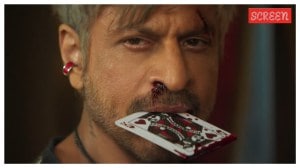Undersea cable to uplink Mumbai with global centres
MUMBAI, February 15: There's a highway being built at Marine Drive. But this one begins two metres below the sands of Chowpatty beach and is...

MUMBAI, February 15: There’s a highway being built at Marine Drive. But this one begins two metres below the sands of Chowpatty beach and is part of an international effort to bridge continents.
Welcome to SE-ME-WE-3. Sounding more exotic seafood dish than cable connecting South East Asia-Middle East-Western Europe, this 38,000 kilometre-long fibre optic undersea cable is slated to be the longest of its kind in the world.
“We’re laying out what will be a giant leap in telecom technology to take India into the next millennium,” Captain Edgar Sylva, director of Olympic Maritime Carriers, handling the India leg of the operation, said. Mumbai is one of the landing points for this information technology highway that is presently being laid on Chowpatty beach.
The colossal international project costs over 1.3 billion US dollars and involves 50 countries, besides our own Videsh Sanchar Nigam Ltd. This undersea highway begins in Singapore, snaking on the seabed to Mumbai, Djibouti, Western Europe and the UK,shooting branches out into practically every country along the way. When these cables finally begin transmitting data by the end of 1999, Internet and phone communication will be practically instantaneous.
Besides boosting VSNL stocks, it will eliminate long delays and clear log-jammed info-highways. Standing near the whizzing traffic of Marine Drive, Captain Sylva explains the dynamics of this new highway. Each cable is about the thickness of a man’s arm. Carefully sheathed in 18 layers of different material is the core, four glass fibres, each thinner than the human hair.
All the data will be transmitted at the speed of light through these four fibres, which compress a whopping 5 lakh circuits. At 2 pm on Chowpatty beach, with a gentle squish of sand and water and a yellow seven-tonne crawler, a giant mechanical spider burrows into the sand two metres deep.
The remotely controlled machine equipped with three cameras waddles under the seabed, gingerly burying the cable, using high pressure water jetsto cut through the sand. A string of bright orange floats marks the progress of the cable into the sea, all the way up to the `Hercules’, a billion-dollar cable laying ship moored off Raj Bhavan.
On the small strip of beach, the united nations of technicians are at work. Bare-backed jean-clad Britishers, New Zealanders, Americans and Australians mingle with Indians and Japanese, mutter instructions into walkie talkies even as divers swing around the bay in several inflatable speed boats.
The team has been working at a feverish pace for the last two months, drawing curious crowds and queries from even the Governor’s office. SEA-ME-WE-3 is third in a line of submarine cables that quadruple their capacity with every new line. This global cable will be the longest in the world when it is finally plugged into the cables running on the seabed between Japan, the US and Europe.
But wait a minute. Weren’t hi-tech satellites supposed to replace the humble submarine cables which were first laid a century agoacross the Atlantic? “Satellites are erratic and unreliable,” Captain Sylva says, “prone to crashing out of orbit, with their information being easily accessible.” The undersea cables promise safe and dedicated communication.
- 01
- 02
- 03
- 04
- 05





























